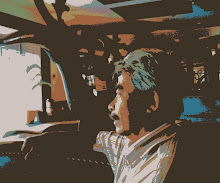Way back in 1867, an Italian botanist organised a truly ''wandering' and botanical expediton to this part of the world to study its biodiversity(today's term). In the same year he stumbled upon the fort at Bintulu. Locally called " kubu", the Bintulu fort then was in deplorable conditions having made entirely of wood. However it was his best hotel for the few nights and rainy days he spent in Bintulu,then a sleepy hollow.
To retract a bit, a few years earlier, the Sultan of Brunei had sold Bintulu area and its northern most point of Tanjong Kidurong for 6000 dollars to James Brooke. Presumably having failed to suppress piracy along the coastal regions of Sarawak and the persistence demand of James Brooke government for the establishment of security and rule of law to the local inhabitants so that trade with the British will not be hampered. And of course with their power entrenched here would permanently discourage the Dutch to extend their sphee of influence to the nortern strip of Borneo.
So the story goes, about this time the Illanun pirates of Mindanao in Southern Phillipines who frequented these areas were most feared by the " orang putih" or whiteman. New, bigger and faster boats or ships need to be purchased by the Brookes administration to play catchup and make the pirates run for dear life. As an example in 1862, a bunch of these Illanun pirates attacked present day Mukah. But The Raja Muda( Charles Brooke) managed to ward them off after a fight and of course by means of a new steamer called the "Rainbow". Good investment back then. However undeterred by this ruinous attempt, they reorganised themselves and gathered strength for an all-out attack on the Bintulu Melanaus.
This decison by the Illanuns proved fatal and a turning point for their murderous fortunes. Not waiting for the arrival of British warship and support the local Bintulu Melanaus took matters to their own hands. They came out in an equally stronger force and managed to fight off the pirates at the bay of Kidurong ( somewhere around the waters of present day Bintulu port area). After a resounding defeat in the hands of the Bintulu Melanaus, the Illanun pirates called it a day. Never again would they ply the coastal routes of Sarawak. Now you can say "Yes" to the Bintulu Melanaus!
Thus as it was conventional thing to do in those days, the British set up fort at Bintulu. Made entirely of wood, it stood there for a while and reflected a strong presence of British rule in northern Sarawak with Bintulu as the focal point of safety and governance.
By a little stretch of magination, you can feel the symbolism when the Sarawak flag was flown over the fort. Imagine for a while when Charles Brooke , the Raja Muda (and later to take over the reins from James Brooke), sending a prisoner of war to the Kayan chief named Oyong Hang slightly earlier in the year. The messenger( prisoner) brought home an ultimatum to his paramount chief viz A cannon ball and the Sarawak flag. The chief was required to choose either one. The ammunition of war to signify aggression or the flag for peace. Guess what? To the good luck of Raja Muda , the Kayans appeared at the doors of Skrang fort holding the flag. Hooray for now!.
Of course in later years, circa 1868, the fort was reconstructed and renamed Fort Keppel in memory of one of the most daring pirate busters of the Britsh empire and who happened to play a major part in suppressing piracy to the aid of James brooke in Sarawak as early as 1843. A check on the Britannica online, shows that Henry Keppel was later knighted as Sir Henry Keppel for his may successful exploits against pirates of the South China Seas, and in particular Sarawak.
Thus, my earlier post, mentioning the photograph of the fort taken in 1868.
What transpired in the walls of the fort in 1867?
History have recorded that the first ever democratic gathering was held in there. The first in the region, now called Malaysia.
Here we witnessed the first meeting of the "orang putih "residents and local communal chifefs.
The agenda looked pretty much like this:
a) To ask reparation from the Sultan of Brunei, who had earlier allowed the Sarawak flag to be insulted, by sending his tax collectors on Sarawak territory. The council to decide on the indemnity required from the Sultan of Brunei.
b) Any other communal matters.
Subscribe to:
Post Comments (Atom)

2 comments:
Hi Mahmud,
A very interesting write up. We were together in TLS. I was Haji's and Angela Chong Choo Ting's classmate and I was in TLS from 1962 - 1967. After Form 5 I joined the Army. You can read about my exploits in my blog http://pgbwarrior.blogspot.com
Robert Rizal Abdullah
(Robert Madang Langi)
Thank you Victor for guiding me to this page. It's always a treat read and learn something new about Bintulu; a town I love dearly. It's amazing to see how much the people had changed since the first group of people moving out Africa and managed to reach Borneo more than 40 thousands years ago.
Post a Comment